When we think of weather, we often picture sunny days, rainy afternoons, or maybe even the occasional thunderstorm. But our planet is just a tiny speck in the vast cosmos, and weather phenomena aren’t limited to Earth alone. Have you ever wondered about the weather on other planets? In this blog post, we’ll explore some captivating cosmic weather phenomena, specifically:
- Martian dust storms
- Venusian super-rotational winds
- Titan’s methane lakes
- Saturn’s hexagonal jet stream
- The Great Red Spot on Jupiter
Martian Dust Storms
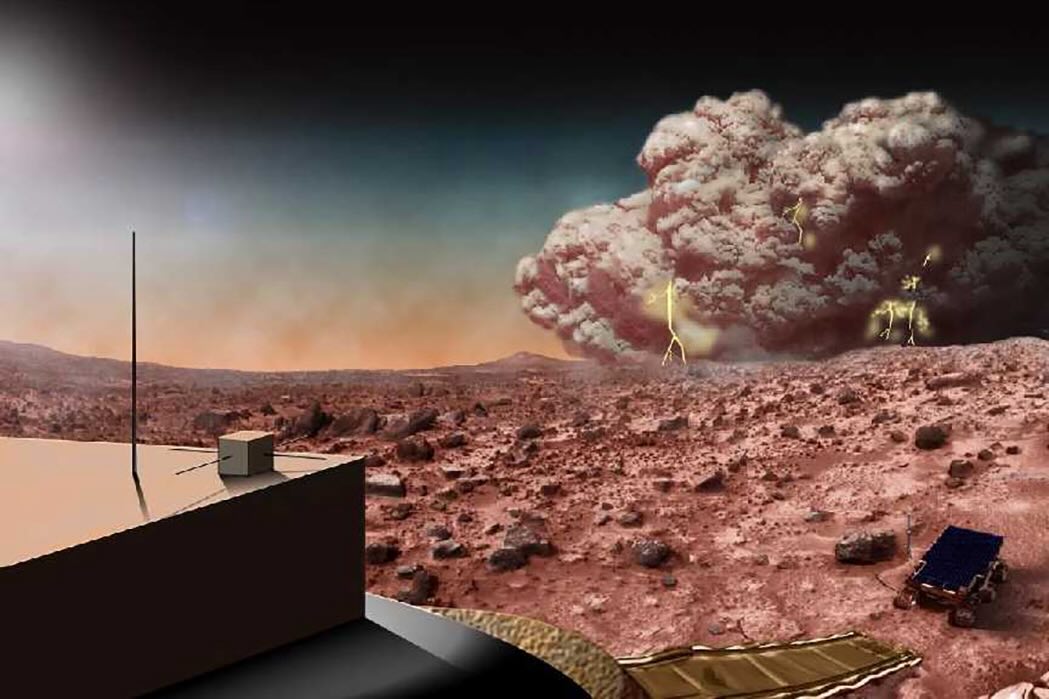 Image source: NASA
Image source: NASA
Mars, often called the “Red Planet” due to its reddish appearance, is known for its extreme weather conditions. One of the most remarkable Martian planetary weather patterns are massive dust storms that can engulf the entire planet.
Martian dust storms are driven by strong winds that kick up fine particles of dust from the surface. They can last for weeks or even months and can obscure the planet’s surface from view. While these storms pose challenges for robotic missions, they are also a subject of scientific fascination, providing insights into the Martian atmosphere’s dynamics. Here’s a table summarizing the greatest dust storms that occurred on Mars:
| Year | Impact |
|---|---|
| 1971 | Reduced visibility, increased surface temperatures, and disruption of spacecraft operations. |
| 1977 | Reduced sunlight reaching the surface and potential damage to spacecraft equipment. |
| 2001 | Significant atmospheric changes, reduced solar power for rovers, and impact on Mars’ climate. |
| 2007 | Diminished rover operations and alteration of the planet’s surface features due to dust deposition. |
| 2018 | Affected the Opportunity rover, leading to a temporary loss of communication and power constraints. |
Venusian Super-Rotational Winds
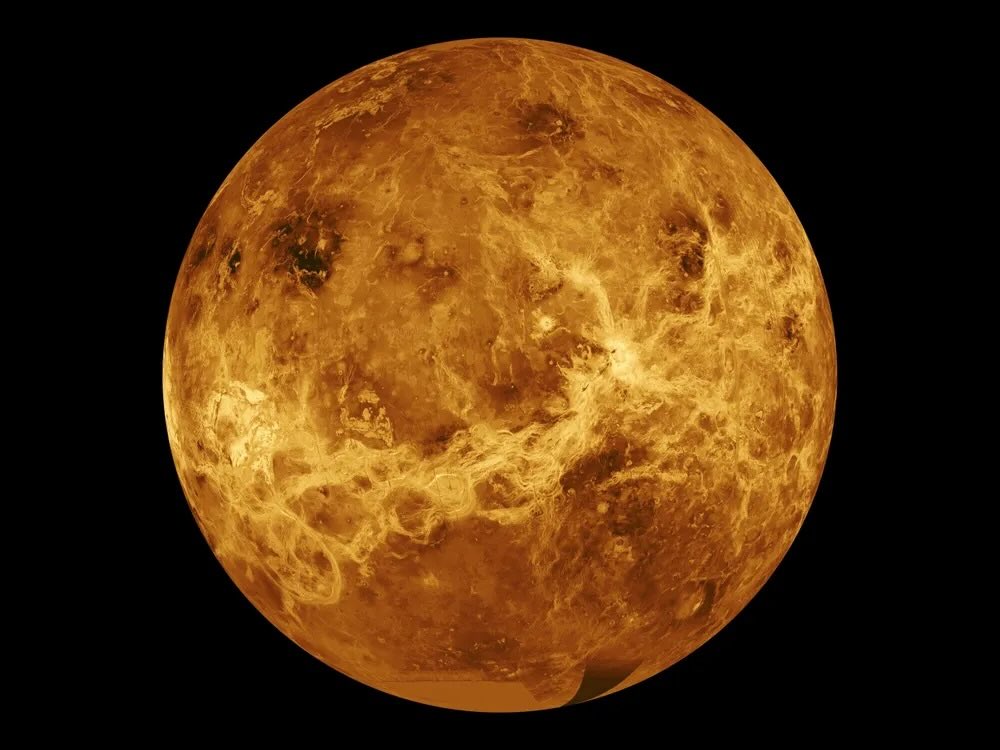 Image source: NASA
Image source: NASA
Venus, often referred to as Earth’s “evil twin,” boasts some of the most severe weather conditions in our solar system. Its thick atmosphere is primarily composed of carbon dioxide, with clouds of sulfuric acid, making it a scorching hot and inhospitable place.
One of the striking features of Venusian weather is the super-rotational winds in its upper atmosphere. These winds can reach speeds of up to 200 mph (322 km/h) and circle the planet in just four Earth days, much faster than Venus’s rotation.
Titan’s Methane Lakes
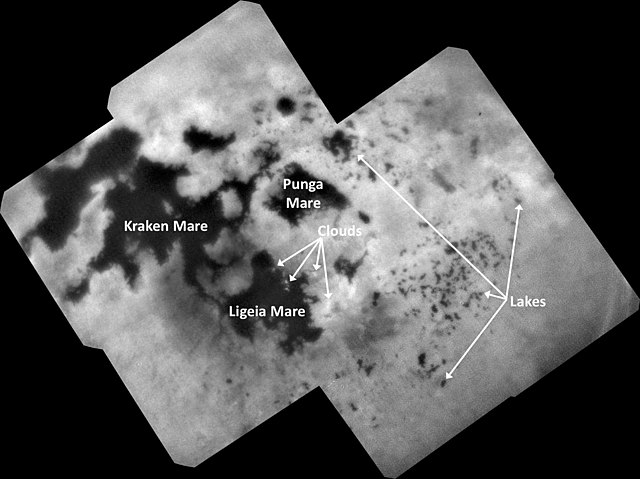 Image source: Wikipedia
Image source: Wikipedia
Saturn’s largest moon, Titan, is a frigid world with an atmosphere rich in methane and ethane. While it may not experience weather events in the same way Earth does, it has its own peculiar meteorological processes. On Titan, methane and ethane rain from the sky, forming lakes and rivers.
These liquid methane lakes and rivers create a landscape that is utterly alien to us but intriguing to scientists. Studying Titan’s weather patterns and the cycles of methane precipitation provides insights into the complex interactions between the moon’s atmosphere, surface, and subsurface.
Saturn’s Hexagonal Jet Stream
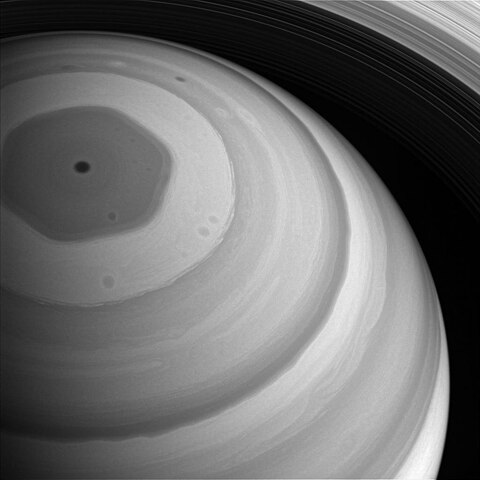 Image source: Wikipedia
Image source: Wikipedia
Saturn, with its iconic rings, is a jewel of our solar system. Among its many mysteries is a captivating weather phenomenon known as the “hexagonal jet stream.” Located near Saturn’s north pole, this hexagonal pattern is a stunning example of weather in our solar system.
The hexagonal jet stream is a massive, persistent cloud formation that takes the shape of a perfect hexagon. Its sides measure approximately 8,600 miles (13,800 kilometers) in length, which is larger than two Earths placed side by side. Within this hexagon, winds reach speeds of up to 200 mph (322 km/h). Scientists think the planet’s rotation as well as the interactions between its atmosphere and the polar vortex make this six-sided shape.
The Great Red Spot on Jupiter
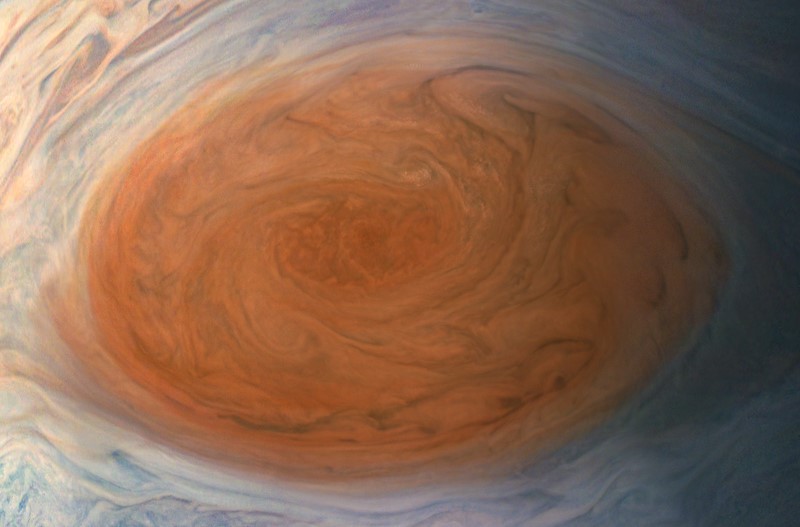 Image source: Kevin Gill, CC BY 2.0, via Wikimedia Commons
Image source: Kevin Gill, CC BY 2.0, via Wikimedia Commons
Jupiter, the largest planet in our solar system, hosts a weather phenomenon that has captivated astronomers for centuries—the Great Red Spot. This massive storm, which is more extensive than Earth itself, has been raging for at least 350 years and possibly much longer.
The Great Red Spot’s swirling clouds create a mesmerizing pattern that is constantly evolving. Scientists are still unraveling the mysteries of this colossal storm, trying to understand its longevity and the forces that sustain it.
Conclusion
As we explore outer space meteorology, we gain a deeper appreciation for the diversity and complexity of the cosmos. From the raging dust storms on Mars to the enduring tempest of Jupiter, each of these celestial weather events showcases the mysteries of our universe.
While our knowledge of the beyond-earth weather is continually evolving, it reminds us of the beauty and wonder of our solar system. As we look to the stars and study these celestial weather events, we gain a better understanding of our planet.
So, the next time you gaze up at the night sky, remember that the universe is not just a static backdrop of stars. It’s a dynamic stage where weather events of cosmic proportions unfold on distant planets and moons.






